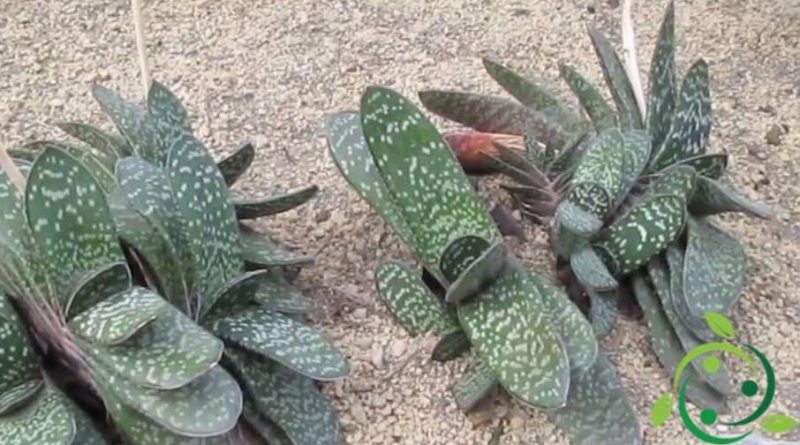How to cultivate Gasteria
How to cultivate Gasteria
Gasteria are a genus of succulent plants of South African origin from the Aloeaceae family.
These plants have fleshy and mottled leaves that develop either a rosette or a bifurcation. The flowers are gathered in spike with bell-shaped flowers of variable color from greenish or white-pink to orange to red.
Within this genus we include the following species:
– Gasteria acinacifolia (J.Jacq.) Haw .;
– Gasteria batesiana G.D.Rowley;
– Gasteria baylissiana Rauh;
– Gasteria brachyphylla (Salm-Dyck) van Jaarsv .;
– Gasteria carinata (Mill.) Duval;
– Gasteria croucheri (Hook.f.) Baker;
– Gasteria disticha (L.) Haw .;
– Gasteria doreeniae van Jaarsv. & A.E.van Wyk;
– Gasteria ellaphieae van Jaarsv .;
– Gasteria excelsa Baker;
– Gasteria glauca van Jaarsv .;
– Gasteria glomerata van Jaarsv .;
– Gasteria nigricans Haw .;
– Gasteria nitida (Salm-Dyck) Haw .;
– Gasteria obliqua (Aiton) Duval;
– Gasteria pendulifolia van Jaarsv .;
– Gasteria pillansii Kensit;
– Gasteria polita van Jaarsv .;
– Gasteria pulchra (Aiton) Haw .;
– Gasteria rawlinsonii Oberm .;
– Gasteria tukhelensis van Jaarsv .;
– Gasteria vlokii van Jaarsv ..
In this card we will see how to cultivate Gasteria according to its soil and climatic needs and the goal of obtaining good flowering in the period that begins in spring and persists until the summer.
In fact the Gasteria do not always flower in a reliable way, so they are mostly cultivated because of the beautiful leaves; in any case, the more an specimen becomes an adult, the more it is suitable for flowering.
However both the Gasteries are a genus of easy-to-grow plants both in pots and in the ground.
If cultivated in pots it is necessary to carry out repotting every 3 -4 years in the spring period using new fresh and specific soil for fat plants.
The substratum, whether grown in the ground or in a pot, must be very draining with a high content of minerals, coarse sand and gravel.
The temperatures in which these plants grow best must range from a minimum of 10 ° C to a maximum of 27 ° C. Slow growth, which occurs in the period between spring and summer.
As far as exposure is concerned, Gasteria requires a lot of light but not the direct rays of the sun, if exposed in full sun, in fact, the leaves will take on a reddish color and the streaks will be very attenuated.
As for water supplies, they are plants that require little watering, especially in winter. Between one irrigation intake and the other one must always wait for the soil to dry. Watering should be regular but not too frequent in the spring-autumn period, but should be completely suspended in the winter period.
In reference to the multiplication, the Gasteria can be propagated both by division of the basal heads, by cutting, and by seed.
In the multiplication by division of the basal heads, the operation is carried out using well sharpened and disinfected shears to detach the suckers that grow at the base of the mother plant, taking care not to ruin the roots. The Gasteria seedlings obtained by division of the tufts must be planted at the moment in universal soil.
In the multiplication by leaf cuttings there is a greater difficulty due to the ease of the leaf to rot or dry.
Finally the multiplication by seed: with this technique it is necessary to lightly bury the seeds in a bed of sifted earth mixed with sand and kept moist, ventilated and shaded at a temperature of 21 ° C.
For the fertilizing technique this changes if the plant is grown in the ground or in pots. In the pot, diluted watering fertilizer should be used twice a month during the growing season.
At the beginning of the spring vegetative growth of the organic substance (excellent the mature manure) it is to be administered mixing it in the first layers of soil and covering it.
Finally we remind that the Gasteria should not be pruned.
A nod to the adversities of Gasteria. Like all succulents it can experience root rot caused by excessive water intake, and some problems can cause cochineal and red spider mite.

